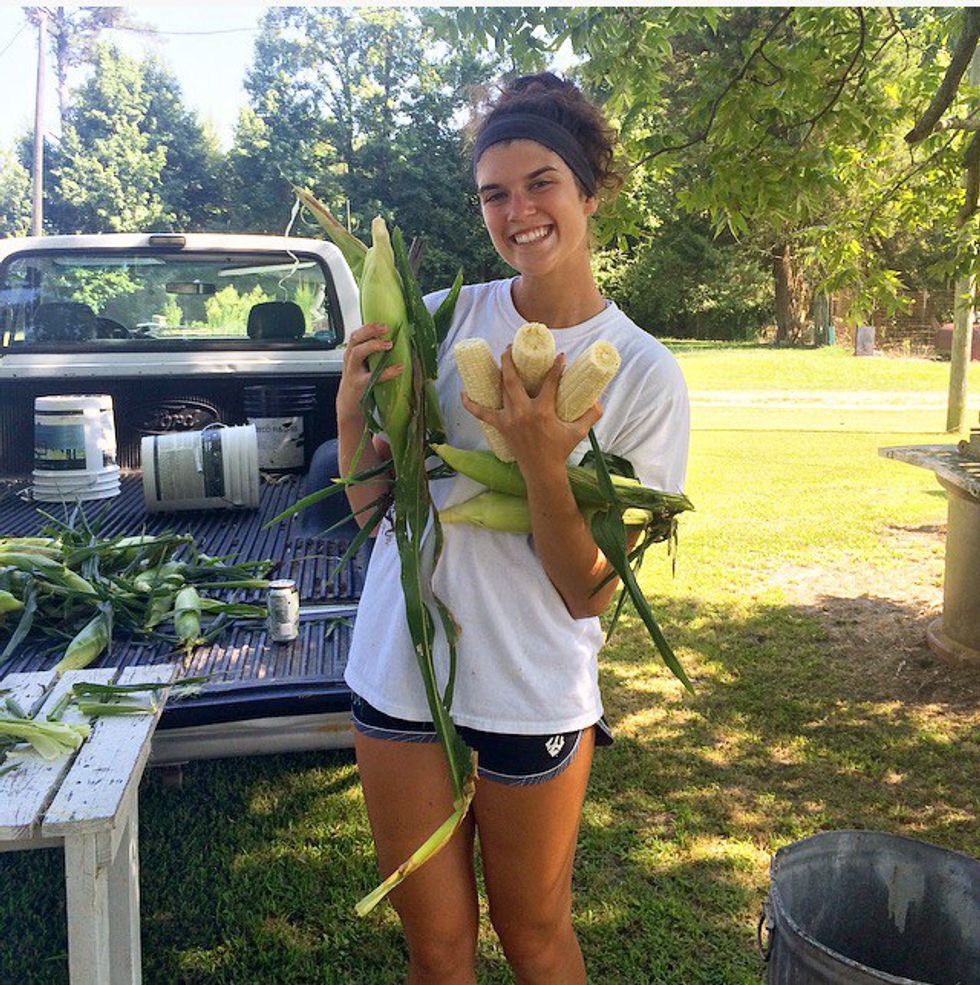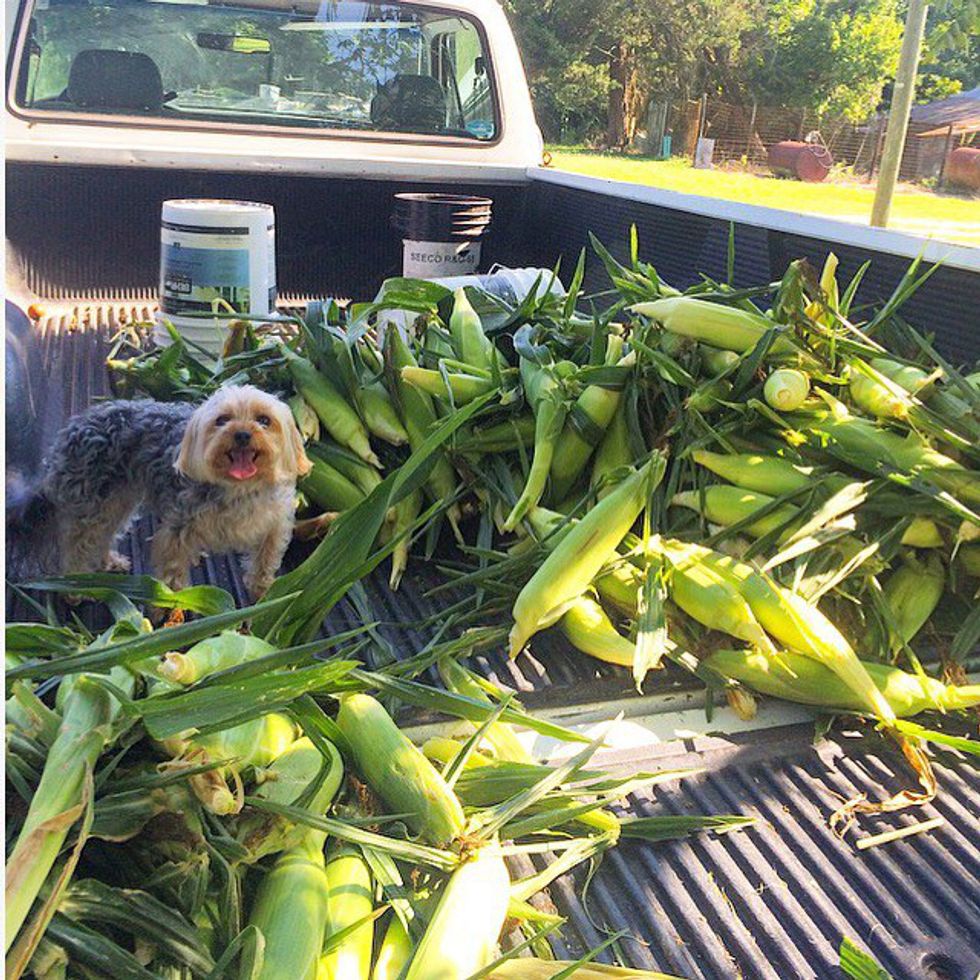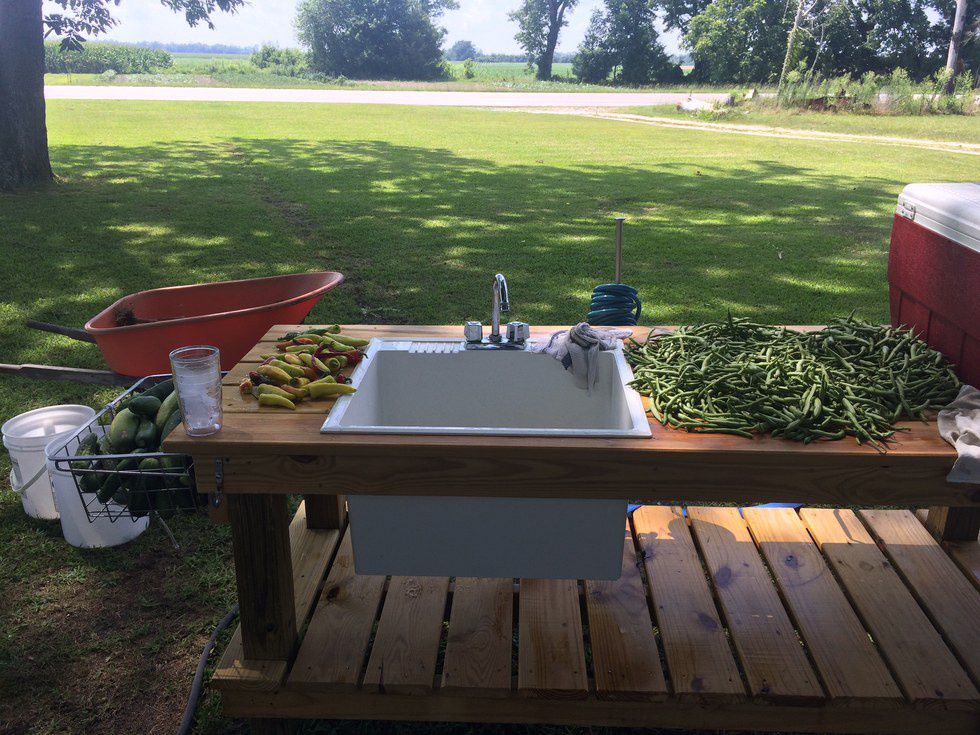Summer marks a special time for many farm-owning families across the United States. It brings a bountiful harvest of fruits and vegetables, especially for small farm owners, or even those with just a small garden. For my mom’s side of the family, picking vegetables in the summer is an annual tradition that brings everyone together, a tradition that many families across the United States share.
Everyone who walks into my family’s home immediately takes note of the jars of vegetables that line our shelves. Okra, string beans, tomatoes, and beets are just some examples of the contents of these jars. In our freezers, you will also find bags and bags of frozen corn, field peas, and butterbeans. Upon seeing the vegetables that fill our home, many ask where we received these vegetables and why. I love this question because it allows me to expound upon something that is near and dear to my heart: picking vegetables in Colerain, North Carolina.
My grandparents, William and Sue Forehand, both grew up in Colerain, North Carolina. In 2010, this small town had a population of 204, so needless to say everyone seems to know each other and everyone seems to own acres and acres of farmland. My grandfather inherited his parent’s house and part of the land that surrounds it. This includes a garden and vegetable patch that has seen generations upon generations of hands. Every summer, everyone on my mom’s side of the family gathers to help pick the vegetables that grow on the land that surrounds my great grandparent's house. As I mentioned earlier, this includes field peas, string beans, tomatoes, okra, cucumbers, butterbeans, and various other vegetables. However, corn is the most notable vegetable that requires the greatest group effort. Getting the corn from field to bag consists of a long process that needs all hands on deck.
To get the corn from field to bag, it first, of course, must be picked. My grandparents have 14 rows of corn in their garden which may not seem like a lot, but in reality produces a lot more corn than you’d expect. Once all the corn has been picked and put in the back of my grandpa’s truck, he then drives all the ears to the station where we cut, shuck, and silk. At this station, someone cuts the end off of each ear of corn which is then passed on to someone else who shucks it. Once the person who shucks the corn has completed their task, they then pass it on to someone who will silk the corn and place it in a cooler. Then, someone carries the coolers full of corn to the kitchen to be boiled so that the corn becomes soft. Once the corn has been boiled, someone takes the corn back out to be cooled off in the huge buckets of ice water. The corn must be cold when bagged or else it is not as good and it causes the freezers to initially not be as cold. Once the corn has been given enough time to thoroughly cool, the corn is then cut off the cob. Next, someone takes the corn and bags it into pint-sized freezer bags which go directly into the freezer. The pictures found at the end of this article are some of the pictures from this year’s corn harvest.
The vegetables within our home that fill and nourish our bodies are truly special (which may seem like a funny thing to say). However, if you think about the hands that touched these vegetables and the process that lies behind them, you realize that they are truly done so with love. They represent so many things that you never thought a vegetable could represent: hard work, love for the earth and all that it provides and love for one’s family. I am so thankful for my grandparents and this experience that we are able to have every summer. Who would have thought that corn could be such a meaningful sentiment?






















